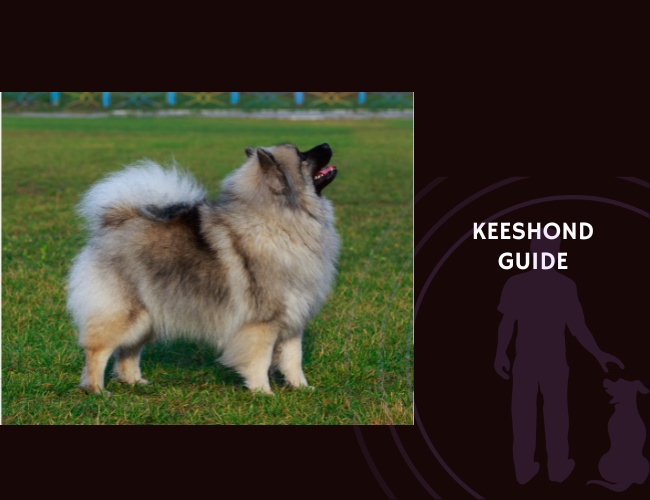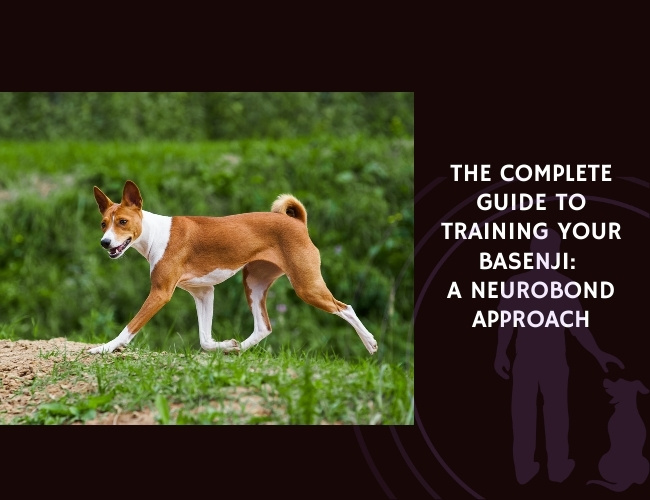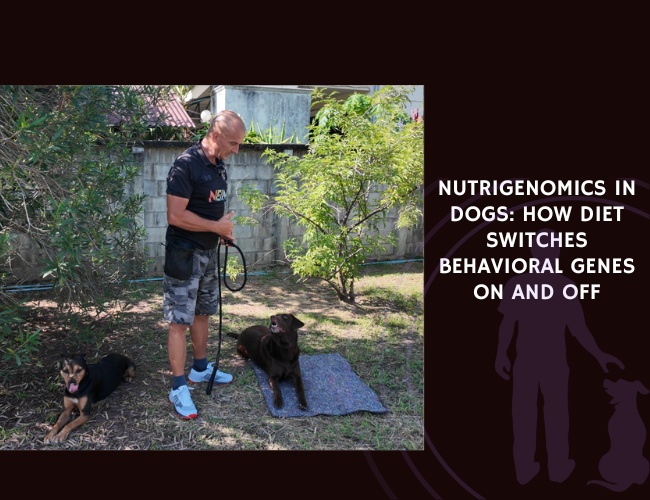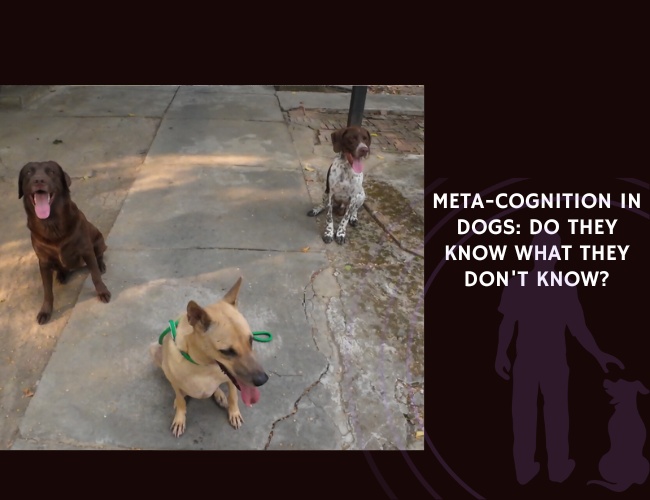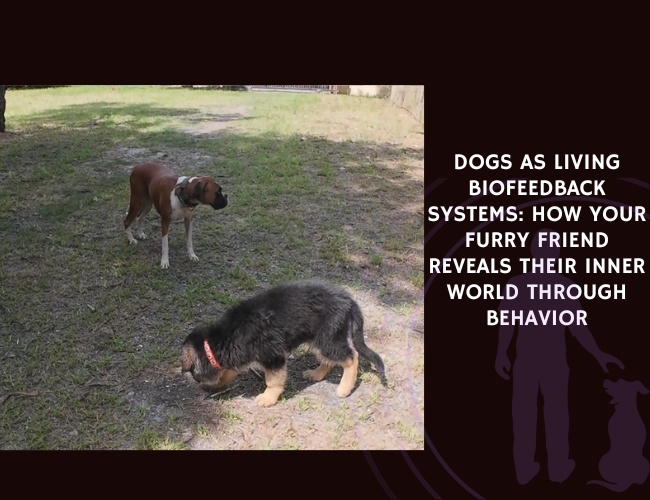Introduction
Picture a fluffy, fox-like dog with a perpetual smile, spectacles markings around expressive eyes, and a personality that could light up even the gloomiest Amsterdam canal. You’ve just imagined the Keeshond (pronounced KAYZ-hond), Holland’s national dog and one of the most devoted companion breeds you’ll ever encounter. With their distinctive grey and black coat that forms a lion-like mane and their unmistakable “spectacles,” these medium-sized spitz dogs carry centuries of Dutch maritime history in their DNA.
Originally bred as watchdogs on Dutch barges and riverboats, Keeshonden (the plural form) earned their place in history not through hunting or herding, but through pure companionship and alertness. Their name derives from the nickname of Cornelis “Kees” de Gyselaer, who led the Dutch Patriots political party in the late 18th century and owned a dog of this breed that became the party’s symbol. Today, these “smiling Dutchmen” have traded their barge-watching duties for a role they seem born to play: devoted family companion.
Did you know that Keeshonden are often called “velcro dogs” due to their intense desire to be near their humans? This trait, combined with their moderate size, keen intelligence, and adaptable nature, makes them exceptional companions for families, singles, and seniors alike. Let us guide you through everything you need to know about living with these remarkable dogs, from understanding their unique behavioral patterns to meeting their specific health and care needs. 🐾
Character & Behaviour
Understanding Your Keeshond’s Emotional World
Living with a Keeshond means sharing your life with a dog whose emotional intelligence rivals that of many humans. These dogs don’t just live alongside their families – they become integral members, reading moods, offering comfort, and celebrating joys with an enthusiasm that’s both touching and sometimes overwhelming.
The Velcro Dog Phenomenon: Your Keeshond will likely follow you from room to room, not out of anxiety, but from a deep-seated need for companionship. Research shows that 95% of Keeshonden exhibit this “shadow behavior,” and it’s completely normal for the breed. They’re not being clingy – they’re being Keeshonden. This behavior stems from their historical role on barges, where staying close to their humans in confined spaces was essential.
Emotional Attunement: You might notice your furry friend seems to know when you’re sad, stressed, or unwell. This isn’t your imagination. Keeshonden demonstrate exceptional ability to read human emotions, likely through a combination of observing body language, detecting chemical changes, and their naturally empathetic disposition. Many owners report their Keeshond offering a paw, leaning against them, or simply sitting quietly nearby during difficult times.
Social Butterfly Nature: Unlike some breeds that bond primarily with one person, Keeshonden typically love everyone in the family equally. They’re the ultimate democrats of the dog world, spreading their affection generously while still maintaining special routines with each family member. This makes them excellent family dogs, as no one feels left out of the canine affection circle. 🧡
Vocalization & Communication
Your Keeshond has a lot to say, and they’ll use their diverse vocal repertoire to ensure you’re always in the loop about what’s happening in their world.
The Keeshond “Talk”: Beyond typical barking, many Keeshonden develop a unique “talking” behavior – a series of grumbles, mumbles, and vocalizations that sound remarkably like attempted human speech. This endearing trait usually emerges when they’re excited to see you or trying to communicate specific needs. You’ll quickly learn to interpret whether they’re saying “I missed you,” “dinner time please,” or “did you see that squirrel?”
Alert Barking Patterns: True to their watchdog heritage, Keeshonden will alert you to anything unusual. Studies indicate they can discriminate between familiar and unfamiliar individuals with 87% accuracy. This means your dog isn’t just barking at everything – they’re making calculated decisions about what warrants your attention. The sharp, repetitive bark for strangers differs noticeably from the higher-pitched excitement barks reserved for family arrivals.
Managing the Voice: While their alertness is admirable, urban living may require some volume control. The good news? Keeshonden respond excellently to “quiet” commands when trained with positive reinforcement. They’re not trying to be annoying – they genuinely believe they’re helping by keeping you informed. Teaching them when alerting is appropriate helps channel this natural behavior productively.
Separation and Independence
Here’s where understanding your Keeshond becomes crucial for both your happiness and theirs. These dogs form intense bonds, which can lead to challenges when left alone.
The Separation Challenge: Approximately 23% of Keeshonden develop clinical separation anxiety, typically manifesting between 6-18 months of age. Signs include excessive vocalization, destructive behavior, or house soiling when left alone. However, this isn’t inevitable – early training makes all the difference.
Building Independence: Start independence training from puppyhood. Practice brief departures, gradually increasing duration. Create positive associations with alone time through puzzle toys, comfortable spaces, and calm departures/returns. Remember, your Keeshond isn’t trying to punish you for leaving – they’re expressing genuine distress that needs compassionate addressing.
Coping Mechanisms: Many Keeshonden benefit from having a consistent routine, a special “alone time” toy, or even a companion pet. Some owners find success with dog daycare or pet sitters for longer absences. The key is recognizing that your Keeshond’s need for company isn’t a flaw – it’s a fundamental aspect of their temperament that requires thoughtful management.
Training & Education
Harnessing Your Keeshond’s Intelligence
You’re working with a breed that ranks 18th out of 79 in Stanley Coren’s intelligence rankings – your Keeshond is smarter than you might expect! This intelligence, combined with their eager-to-please nature, creates an interesting training dynamic.
The Learning Sweet Spot: Keeshonden typically master new commands in 5-15 repetitions, but here’s the catch – they need to see the point. Unlike some breeds that perform commands robotically, your Keeshond wants to understand why they’re doing something. This means training sessions should be engaging, varied, and clearly rewarding.
Positive Reinforcement Magic: Research confirms what Keeshond owners have long known: these dogs thrive on positive reinforcement. With 78% showing high food motivation and an impressive 91% responding to verbal praise, you have multiple tools in your training toolkit. Mix it up – use treats for learning new behaviors, praise for maintaining them, and play as a special reward for breakthrough moments.
The “Selective Hearing” Phenomenon: Sometimes your brilliant Keeshond will look at you during training as if to say, “I hear you, but I’m choosing to ignore you right now.” This isn’t defiance – it’s independent thinking. When this happens, increase your enthusiasm, make the reward more enticing, or take a break and return when you’re both fresh. They’re not stubborn; they just have opinions!
Early Socialization Windows
The period between 3-16 weeks shapes your Keeshond’s entire future temperament. Missing these critical windows can result in a fearful or reactive adult dog, so let’s make them count.
The Magic Timeline:
- 3-5 weeks: Your puppy starts noticing the world exists
- 6-8 weeks: The social awareness switch flips on
- 8-14 weeks: Critical socialization period – everything matters now
- 14-16 weeks: Fear period – proceed with gentle confidence
- 4-8 months: Second chance to reinforce positive experiences
Socialization Priorities: Aim for your puppy to meet 100+ different people during the critical period. This sounds daunting, but think creatively – pet stores, outdoor cafes, and puppy classes all count. Expose them to different surfaces (grass, concrete, gravel), sounds (traffic, construction, children playing), and experiences (car rides, grooming, vet handling).
Quality Over Quantity: One positive experience with a child is worth more than ten neutral ones. Focus on creating positive associations. That person in a hat who gives treats? Hats are now wonderful! The vet who plays before examining? Medical care becomes less stressful. You’re not just exposing your puppy to the world – you’re teaching them how to feel about it.
Urban Training Essentials
City life presents unique challenges for our barge-dog friends. Let’s prepare them for success in the concrete jungle.
Noise Desensitization: Start with recordings of city sounds at low volume during positive activities like feeding or play. Gradually increase volume over weeks. Real-world exposure should begin in quieter areas, progressively moving to busier locations. Your calm confidence teaches your Keeshond that sirens, construction, and traffic are just background noise.
Elevator and Escalator Training: These moving boxes and stairs can terrify unprepared dogs. For elevators, start by simply walking in and out without moving. Progress to short rides, rewarding calm behavior. Escalators require extreme caution – many experts recommend carrying small-to-medium dogs or using elevators exclusively for safety.
Appropriate Elimination Habits: Urban Keeshonden must learn to eliminate on various surfaces and in designated areas. This requires patience and consistency. Some city dogs learn to use specific command words for elimination, making rainy-day quick trips more efficient. Remember, your Keeshond wants to please you – clear communication about where and when helps them succeed.

Nutritional Recommendations
Feeding Your Fluffy Friend
Your Keeshond’s moderate size and activity level mean they’re relatively easy keepers, but their tendency toward weight gain requires vigilant portion control. Let’s explore how to keep your companion healthy and satisfied.
Caloric Calculations: Adult Keeshonden typically need 25-30 calories per pound of body weight daily. For a 40-pound adult, that’s 1,000-1,200 calories – roughly 1.5-2.5 cups of quality kibble divided into two meals. But remember, these are guidelines. Your dog’s individual metabolism, activity level, and age all factor into their actual needs.
The Weight Gain Tendency: Those pleading eyes and that tilted head make it hard to resist giving extras, but Keeshonden gain weight easily. Extra pounds stress their joints and can exacerbate breed-specific health issues. Use a body condition scoring system: you should feel ribs easily but not see them, observe a visible waist from above, and note an abdominal tuck from the side.
Meal Timing and Routine: Keeshonden thrive on routine, and scheduled meals provide structure to their day. Most do well with breakfast and dinner, roughly 12 hours apart. This schedule also helps with housetraining and prevents the blood sugar spikes associated with free feeding. Plus, meals become bonding moments – another opportunity for your velcro dog to engage with you! 🧡
Omega-3 and the Glorious Keeshond Coat
That magnificent double coat requires nutritional support from the inside out. Omega-3 fatty acids aren’t just supplements – they’re essential for your Keeshond’s health and appearance.
The Science of Supplementation: Research confirms that marine-derived omega-3s (EPA and DHA) significantly improve coat quality, reduce shedding intensity, and provide anti-inflammatory benefits. Daily supplementation of 1.0-1.5g combined EPA/DHA helps maintain that plush coat while supporting joint health and cognitive function.
Beyond Aesthetics: While a lustrous coat catches eyes at the dog park, omega-3s work deeper magic. They reduce the incidence of hot spots, support cardiovascular health, and may even help with the mild joint issues some Keeshonden develop with age. For senior dogs, increased doses up to 2.8g daily can help manage inflammatory conditions.
Choosing Quality Sources: Not all omega-3s are created equal. Marine sources (fish oil) significantly outperform plant-based alternatives (flaxseed) in bioavailability. Look for products that list EPA and DHA content specifically, store them properly to prevent rancidity, and introduce gradually to avoid digestive upset.
Special Dietary Considerations
Every Keeshond is unique, and some require specialized nutrition approaches. Understanding potential sensitivities helps you provide optimal nutrition.
Common Intolerances: Approximately 15-20% of Keeshonden show sensitivity to common grains like wheat or corn. Another 8-10% react poorly to chicken, the most common protein in commercial dog foods. Signs include chronic ear infections, excessive paw licking, or gastrointestinal upset. If you notice these symptoms, consult your veterinarian about an elimination diet trial.
The Elimination Diet Process: This involves feeding a novel protein (like venison or duck) and single carbohydrate source for 8-12 weeks, then gradually reintroducing ingredients to identify triggers. It requires patience and strict adherence – no treats, table scraps, or flavored medications during the trial. Your Keeshond’s improved comfort makes the effort worthwhile.
Digestive Health Support: Keeshonden generally have robust digestive systems, but some benefit from probiotic supplementation or added fiber. The ideal diet contains 3-5% crude fiber and moderate fat levels (12-16%). Higher fat content can trigger pancreatitis in susceptible individuals, while too little affects coat condition and energy levels.
Fluffy. Loyal. Watchful.
Your Keeshond is an emotional companion.
More than a watchdog, this barge-born breed reads your mood like a script. Joy, stress, sadness—they feel it all and respond with empathy, not just presence. It’s not clinginess. It’s connection.
Smart but selective.
Your Keeshond learns fast—but only if the lesson makes sense. They’re not robotic. They’re relational. Mix praise, play, and purpose to unlock their brilliance. If they pause, it’s not defiance—it’s evaluation.
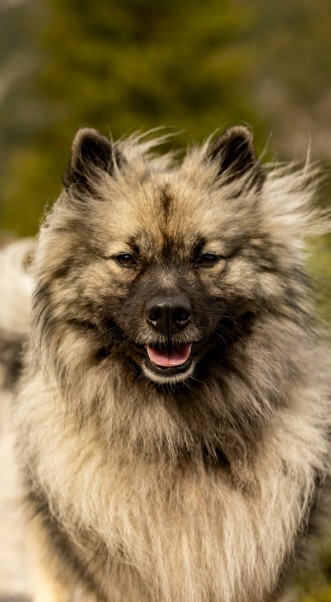
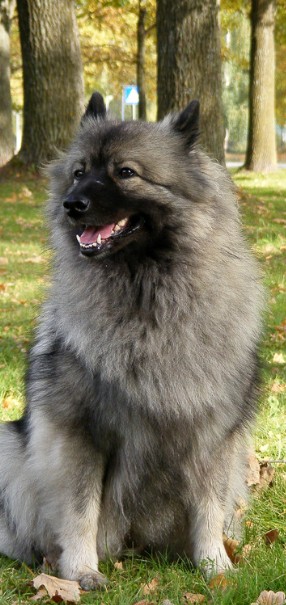
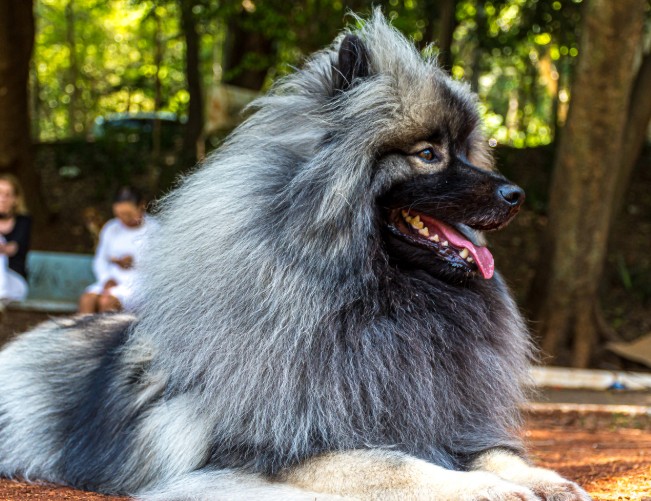
A coat as bold as their voice.
Beneath the lion-like mane lies a vigilant heart. Keeshonden speak in layers—grumbles, sighs, barks, and stares. Train them to whisper, not shout. Their bark once protected barges; today, it protects your peace.
Health Concerns & Prevention
Understanding Breed-Specific Health Risks
Knowledge is power when it comes to your Keeshond’s health. While generally healthy dogs with 12-14 year lifespans, they have several breed-specific concerns requiring vigilance.
Primary Hyperparathyroidism (PHPT) – The Keeshond Challenge: This condition deserves special attention as Keeshonden show the highest breed predisposition of all dogs, with an odds ratio of 50.764. PHPT causes excess calcium in the blood, leading to kidney stones, osteoporosis, and various systemic effects. The good news? It’s treatable when caught early.
Understanding PHPT requires recognizing that it typically appears in middle-aged to older dogs (8-12 years). The recent development of genetic testing through Cornell University allows breeders to make informed decisions, potentially reducing future incidence. For your dog, this means starting biannual calcium monitoring from age 6. Early detection allows for surgical intervention with excellent outcomes – most dogs return to normal calcium levels post-surgery.
Hip Dysplasia – Not Just for Large Breeds: While less common than in giant breeds, 8-12% of Keeshonden develop hip dysplasia. This inherited condition involves improper hip joint formation, leading to arthritis and mobility issues. Prevention starts in puppyhood with controlled exercise, proper nutrition to prevent rapid growth, and maintaining lean body condition throughout life.
Screening through OFA (Orthopedic Foundation for Animals) or PennHIP helps identify affected dogs before breeding. For your pet Keeshond, watch for bunny-hopping gaits, difficulty rising, or reluctance to climb stairs. Early intervention with weight management, appropriate exercise, and joint supplements can significantly slow progression.
Hypothyroidism – The Metabolism Manager: Affecting 10-15% of Keeshonden, typically between ages 4-8, hypothyroidism occurs when the thyroid gland produces insufficient hormones. You might notice weight gain despite normal eating, lethargy, or coat changes – that magnificent fluff becoming dull or sparse.
Diagnosis requires complete thyroid panels including autoantibodies, not just basic T4 levels. Once diagnosed, daily levothyroxine supplementation restores normal metabolism. The transformation can be dramatic – owners often report their “senior” dog acting years younger once properly treated. Regular monitoring ensures optimal dosing throughout your dog’s life.
Genetic Testing and Screening Protocols
Modern veterinary medicine offers powerful tools for protecting your Keeshond’s health. Let’s explore which tests matter and when to use them.
Essential Genetic Tests:
- PHPT Genetic Test: Now available through Cornell/CAGT
- Progressive Retinal Atrophy (PRA): Various forms testable
- Degenerative Myelopathy (DM): SOD1 mutation screening
- Hip Dysplasia: OFA or PennHIP evaluation
Screening Timeline: Start with genetic tests that inform breeding decisions or early intervention strategies. PHPT testing helps predict risk, while PRA testing prevents breeding affected dogs. For conditions like hip dysplasia, screening at 2+ years provides valuable information for long-term management.
Beyond Genetics: Remember that genes load the gun, but environment pulls the trigger. A dog genetically predisposed to hip dysplasia may never develop clinical signs with proper management. Conversely, genetic testing can’t predict every health issue. Regular veterinary examinations, appropriate preventive care, and attentive observation remain your best defense against health problems.
Preventive Care Strategies
An ounce of prevention truly equals a pound of cure in Keeshond health management. Let’s build a comprehensive wellness plan.
Joint Health Maintenance: Start glucosamine/chondroitin supplementation around age 5, before arthritis develops. Maintain lean body condition – every extra pound multiplies stress on joints. Provide regular, moderate exercise like swimming or walking rather than high-impact activities. Consider omega-3 supplementation for its anti-inflammatory properties.
Thyroid Monitoring: Annual thyroid screening from age 4 helps catch hypothyroidism early. Watch for subtle signs like mild weight gain, decreased enthusiasm for walks, or coat quality changes. These often appear before dramatic symptoms, allowing earlier intervention.
Calcium Vigilance: Given the PHPT risk, monitor calcium levels during routine senior bloodwork. If levels trend upward, increase monitoring frequency. Early surgical intervention offers better outcomes than waiting for severe symptoms. Some owners of genetically at-risk dogs choose proactive monitoring from younger ages.
Dental Health: Those smiling Keeshond faces need dental care! Daily brushing prevents periodontal disease, which can affect heart and kidney health. Start young to make it a pleasant routine. Professional cleanings may be needed annually after middle age, depending on individual accumulation rates.
Lifestyle & Environment
Creating the Perfect Keeshond Home
Your home is your Keeshond’s universe, and they’ll thrive when it meets their physical and emotional needs. Let’s design a living space that works for both of you.
Space Considerations: Keeshonden adapt remarkably well to various living situations. That 400-square-foot studio apartment? Perfectly fine if paired with adequate exercise and mental stimulation. That sprawling farmhouse? Also great, though your Keeshond will likely choose to stay in whatever room you occupy. The key isn’t space quantity but quality of interaction within that space.
Climate Control Challenges: That magnificent double coat comes with a price – heat sensitivity. Keeshonden can struggle in warm climates, requiring air conditioning, cooling mats, and careful exercise scheduling during summer months. Some owners in hot regions give summer “puppy cuts,” though this remains controversial among breed enthusiasts. Never shave a double-coated breed completely, as it damages coat texture and removes insulation properties.
Creating Comfort Zones: Your velcro dog needs spaces where they can observe family activities. Place dog beds in high-traffic areas like living rooms and home offices. Many Keeshonden enjoy elevated beds that provide better views of their domain. Consider multiple resting spots so they can follow the family’s daily migration through the house without carrying bedding room to room!
Exercise and Mental Stimulation Balance
Keeshonden need moderate exercise – enough to maintain fitness without exhausting themselves or you. Finding the right balance keeps everyone happy.
Physical Exercise Needs: Adult Keeshonden typically require 30-60 minutes of daily activity. This might include:
- Morning walk: 20-30 minutes at a brisk pace
- Evening playtime: 15-20 minutes of fetch or tug
- Weekend adventures: Longer hikes or beach trips
Remember, mental fatigue tires dogs more than physical exercise alone. A 20-minute training session can exhaust your Keeshond more than an hour-long walk.
Mental Enrichment Essentials: Your intelligent companion needs brain games to prevent boredom. Puzzle feeders turn mealtime into an adventure. Scent work games tap into natural abilities while building confidence. Hide treats around the house for “find it” games. Rotate toys weekly to maintain novelty. These activities prevent destructive behaviors born from boredom while strengthening your bond.
Age-Appropriate Adjustments: Puppy exercise follows the 5-minute rule: five minutes of structured exercise per month of age, twice daily. So a 4-month-old puppy needs about 20 minutes morning and evening. Senior Keeshonden may need shorter, more frequent outings. Swimming provides excellent low-impact exercise for arthritic seniors while keeping them cool during summer months. 🐾

Family Integration and Child Safety
Keeshonden earn their reputation as excellent family dogs through their patient, gentle nature with children. Creating successful child-dog relationships requires planning and supervision.
Teaching Mutual Respect: Children must learn that dogs need personal space, especially during meals and rest. Establish dog-free zones where your Keeshond can retreat when overwhelmed. Teach children to recognize stress signals: yawning, lip licking, or turning away indicate your dog needs a break.
Supervision Strategies: Never leave dogs and young children unsupervised, regardless of how gentle your Keeshond seems. Even patient dogs have limits, and children can inadvertently cause pain or fear. Active supervision means engaging with both child and dog, not simply being present while scrolling your phone.
Building Positive Associations: Involve children in dog care appropriately. Older children can help with grooming, training, or feeding under supervision. This teaches responsibility while strengthening the child-dog bond. Your Keeshond will often develop special relationships with “their” children, following them protectively and offering comfort during upsets.
Grooming as Lifestyle Integration
That glorious coat requires commitment, but grooming becomes enjoyable bonding time with the right approach.
The Grooming Routine: Keeshonden need brushing 2-3 times weekly, increasing to daily during “coat blowing” seasons (typically spring and fall). Line brushing – working through the coat in sections – prevents matting while removing dead undercoat. The process takes 20-30 minutes once you develop efficiency.
Seasonal Coat Blowing: Twice yearly, your Keeshond will shed their undercoat dramatically. Your house will look like a grey snowstorm hit. This is normal! Increase brushing frequency, use appropriate tools (slicker brush, undercoat rake), and consider professional grooming during peak shedding. Some owners save the soft undercoat for spinning into yarn – Keeshond fur creates incredibly warm, water-resistant fiber!
Making Grooming Positive: Start grooming training immediately with puppies. Short, positive sessions with treats build tolerance. Many Keeshonden learn to enjoy grooming as focused attention time. Place a non-slip mat on your grooming surface, keep sessions short initially, and always end on a positive note. Your attitude shapes theirs – if you dread grooming, they will too.
Senior Care Considerations
Aging Gracefully with Your Keeshond
As your smiling Dutchman enters their golden years (typically around age 8), their needs shift. Understanding these changes helps you provide optimal senior care.
Physical Changes: You might notice your once-bouncy companion moving more carefully, especially in the morning. Arthritis affects many senior Keeshonden, particularly those with hip dysplasia history. Vision may dim, though most adapt well to gradual changes. Hearing loss is common but rarely problematic in familiar environments.
Adapting the Environment: Install ramps for car access or favorite furniture. Place runners on slippery floors to prevent falls. Consider orthopedic bedding for arthritic joints. Night lights help dogs with declining vision navigate safely. These modifications maintain your senior’s independence and confidence.
Nutritional Adjustments: Senior Keeshonden often need fewer calories but more high-quality protein to maintain muscle mass. Adjust portions to prevent weight gain that stresses aging joints. Consider senior formulas with joint support ingredients. Some benefit from more frequent, smaller meals to aid digestion.
Mental Stimulation for Seniors: Cognitive dysfunction can affect older dogs, but mental exercise helps maintain sharpness. Adapt activities to physical limitations – scent games require minimal movement while engaging the mind. New tricks aren’t just for young dogs; seniors enjoy learning at their own pace. Maintaining routines provides security while small variations prevent cognitive stagnation.
Quality of Life Monitoring: You know your Keeshond best. Watch for changes in appetite, enthusiasm, or behavior. Pain can manifest subtly – reluctance to jump, changes in sleep patterns, or increased irritability. Regular veterinary checkups every 6 months allow early intervention. Remember, senior doesn’t mean suffering – many Keeshonden remain active and happy well into their teens with appropriate care. 🧡
Conclusion: Is a Keeshond Right for You?
After exploring every aspect of Keeshond ownership, let’s distill the essential question: will you and a Keeshond make each other happy?
You’ll thrive with a Keeshond if you:
- Want a devoted companion who’ll share every aspect of your life
- Can provide daily grooming and don’t mind seasonal fur storms
- Work from home or have flexible schedules (or can arrange dog care)
- Appreciate an alert dog who’ll announce visitors
- Live in a temperate climate or can manage heat sensitivity
- Want a medium-sized dog with big-dog personality
- Value emotional intelligence and companionship over working ability
Consider another breed if you:
- Need an independent dog who’s happy alone for long periods
- Prefer minimal grooming requirements
- Want a silent companion
- Live in extremely hot climates without climate control
- Need a hunting, protection, or high-intensity sport dog
- Are away from home frequently with unpredictable schedules
The Keeshond offers something increasingly rare in our disconnected world: unwavering companionship. These dogs don’t just live with you; they live for you. Their expressive faces mirror your emotions, their alert barks keep you informed, and their plush coats invite endless cuddles. Yes, they require grooming, can be vocal, and need companionship. But in return, you receive devotion that borders on telepathic, a walking stress-relief system, and a friend who’ll celebrate your joys and comfort your sorrows with equal enthusiasm.
Living with a Keeshond means accepting fur on everything, planning your schedule around their social needs, and learning to appreciate their vocal commentary on life. It means early morning walks in rain or shine, regular grooming sessions, and vigilant health monitoring. But it also means coming home to pure joy, having a steadfast companion through life’s ups and downs, and experiencing the unique pleasure of being chosen by one of dogdom’s most devoted breeds.
The Dutch have a saying: “Wie een hond heeft, heeft een schat” – “Who has a dog, has a treasure.” With a Keeshond, you don’t just have a treasure; you have a fluffy, smiling, eternally devoted treasure who’ll make every day brighter with their presence. If you’re ready for this level of companionship, your perfect Keeshond is waiting to begin a lifetime of adventures by your side. Welcome to the wonderful world of Keeshond ownership – may your journey be filled with wagging tails, happy “talks,” and endless love. 🐾

